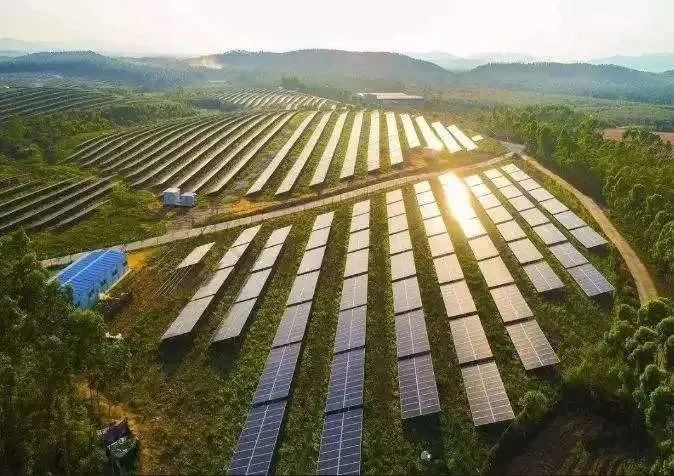Photovoltaic power generation is to convert light energy directly into direct current energy through the characteristics of semiconductors, and then convert direct current into alternating current that can be used by us through the inverter.
Photovoltaic system is composed of photovoltaic modules, supports, DC cables, inverters, AC cables, distribution cabinets, transformers, etc., of which, the support is not charged, naturally will not produce electromagnetic radiation. The photovoltaic module and DC cable inside is DC current, the direction does not change, can only produce electric field, can not produce magnetic field.

(Radiation comparison of various household appliances and photovoltaic modules)
The electromagnetic radiation of photovoltaic inverters compared with household appliances is about the same as that of laptop computers, lower than induction stoves, hair dryers, refrigerators.
Therefore, the construction of photovoltaic power stations will not only not cause harm to human health, but also provide green and clean high-quality energy for the earth, which is the future direction of human energy development.
1. The manufacturing process is not "energy intensive"
Photovoltaic manufacturing industry mainly includes crystal silicon purification, silicon ingot silicon wafers, photovoltaic cells and photovoltaic modules four links. Among them, crystal silicon purification needs to be completed under high temperature conditions, will consume a lot of electricity, accounting for about 56-72% of the total energy consumption, is the most important chemical production process in the industrial chain, and "high pollution" from the production of high-purity polysilicon byproducts.
Crystal silicon purification is indeed a large-scale, high-energy industry. However, this does not mean that photovoltaic products are high energy consumption, we also need to convert the total energy consumed in the production of photovoltaic modules into power consumption, and compared with the lifetime of the module. The "photovoltaic manufacturing industry Specification Conditions" issued by the Ministry of Industry and Information Technology in 2015 stipulates that the power consumption of the polysilicon production process must be less than 120 KWH/kg, and the new construction and expansion projects must be less than 100 KWH/kg, which should be closer to the current world advanced level of energy consumption.
This conversion, in line with the national regulations of photovoltaic power consumption, the production of a watt of photovoltaic modules need 0.6-1.2 degrees of electricity. According to the 25-year life of photovoltaic modules, photovoltaic power generation is far greater than production consumption.
2.No light pollution
Light pollution is threatening people's health. In daily life, people's common light pollution is mostly caused by the vertigo of pedestrians and drivers caused by the reflection of mirror buildings, and the discomfort caused by unreasonable lighting at night.
So everyone is worried about whether the installation of photovoltaic modules has light pollution. In fact, the visible light reflection coefficient of ordinary tempered glass is 9% to 11%, which will not cause light pollution, and the photovoltaic module uses the same type of glass as the building, which will not cause light pollution. The source of light pollution is visible light, and the internal power generation unit cell of the photovoltaic module will absorb visible light and convert it into electricity, which will further reduce the reflection of visible light. And with scientific and technological innovation, many photovoltaic building materials can now be made into frosted surfaces, which can reduce the reflection of visible light.
3. No noise, no emissions
Photovoltaic power generation is the conversion of solar energy into electricity, is photoelectric conversion, this process does not produce noise, there will be no pollution emissions, very suitable for installation in residential and industrial and commercial roofs.
In recent years, the hot development of distributed photovoltaic, most of them are suitable for installation on the roof of photovoltaic power generation, with the function of energy saving and emission reduction, but also heat insulation and waterproof.
Now many factories installed photovoltaic power stations on the roof, and many residents installed solar grid for home, so we can actually feel the noise-free, emission-free power generation process.
